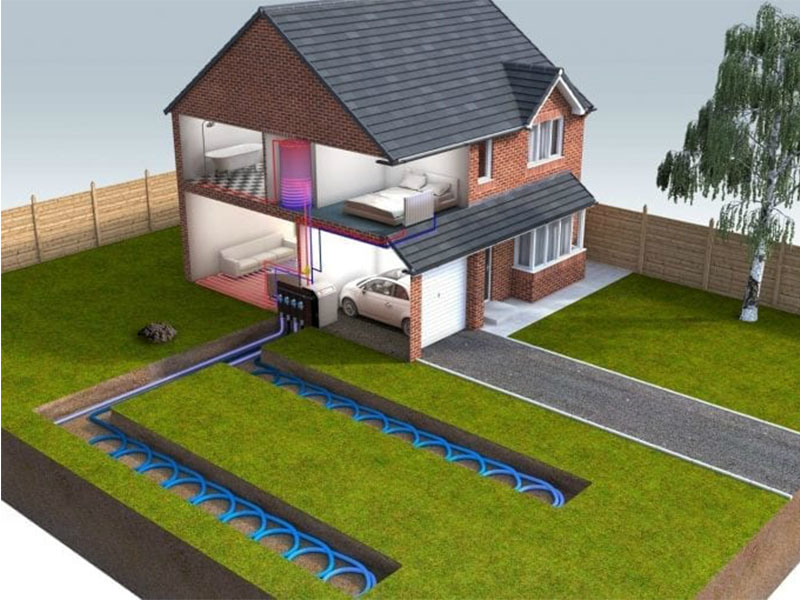Just to recap, geothermal heating works by moving temperature-conducting fluid through an underground loop of pipes beneath or near your home. This allows the fluid to collect the thermal energy deposited in the earth from the sun. This works well even in the coldest winters because the earth below the frostline is a steady 55 degrees Fahrenheit all year long. The heat is circulated back into the pump and then distributed evenly throughout your home using your duct work.
Now, for the big question: how does the same geothermal heat pump that heats your home in the winter also produce AC for the summer?
Essentially, the heat transfer process works in reverse. Here’s the short explanation: As air is circulated through your house, your heat pump removes heat from the air and transfers it to the fluid that circulates to the ground.
As the ground is at a lower temperature (55F), heat dissipates from the fluid to the ground. The experience of cold air blowing into your home is the result of the process of removing heat from the circulated air, transferring that heat to the ground, and returning cool air back to your home.
Here’s a slightly longer explanation: The cycle begins when the compressor inside your heat pump increases the pressure and temperature of the refrigerant. This hot refrigerant moves through the condenser, where it comes into contact with and transfers heat to the ground loop fluid. This fluid is then circulated through your ground loop piping where it releases heat to the ground.
But back to the heat pump. After transferring heat to the ground loops, the refrigerant moves through the expansion valve, which decreases both the temperature and pressure of the refrigerant. The now cold refrigerant then travels through the evaporator coil to come into contact with the hot air inside your home. The heat from the air inside is absorbed by the cold refrigerant leaving only cold air. This cycle repeats until your home reaches your desired temperature.

Post time: Mar-16-2022

